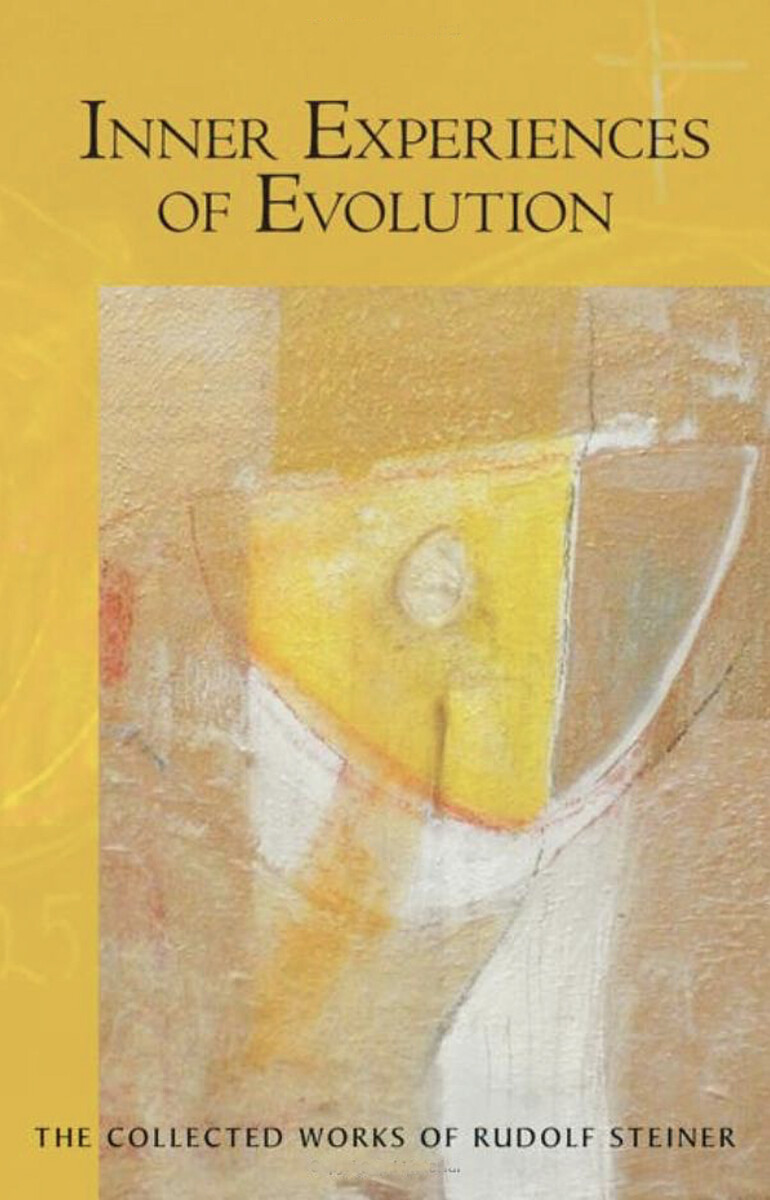Inner Experiences of Evolution
(CW 132)
- Publisher
SteinerBooks - Published
1st March 2006 - ISBN 9780880106023
- Language English
- Pages 136 pp.
5 lectures in Berlin, October 31, 1911–December 5, 1911 (CW 132)
“If we tried to discover the essential context for the ‘I’ in the same sense as we know the context for the physical body, then we would come to a cosmic portrait or tableau that invisibly permeates our surroundings even today and is identical to the cosmic tableau of ancient Saturn.” — Rudolf Steiner
In this most remarkable and in many ways unique course of lectures, Rudolf Steiner describes the inner experience of the states of consciousness known as the Saturn, Sun, Moon, and Earth stages of evolution.
Lecture by lecture, Steiner details the experiences of these states available to one who practices the spiritual scientific path of meditation. By this means, these stages and states gain an unexpected and existential reality: suddenly, we recognize what Steiner is talking about. Most remarkable of all, perhaps, is the description of the Earth state with its experience of death, which Christ knew on the Cross at Golgotha, transforming earthly and human evolution.
“Within longing we see egoism flashing like lightning, albeit in its weakest form; and we also see longing slipping into cosmic development. And thus, we see how beings who surrender to longing, that is, surrender themselves to their egoism are—if something else does not intervene—condemned in a certain way to one-sidedness, to living merely in themselves.” — Rudolf SteinerInner Experiences of Evolution is a translation from German of « Die Evolution vom Gesichtspunkte des Wahrhaftigen » (GA 132). These lectures were previously included as part of The Spiritual Hierarchies and the Physical World: Reality and Illusion (1996). A previous translation also appeared as Evolution in the Aspect of Realities (Garber).
C O N T E N T S:
1. The Inner Aspect of the Saturn Embodiment of the Earth
Berlin, Oct. 31, 1911
2. The Inner Aspect of the Sun Embodiment of the Earth
Berlin, Nov. 7, 1911
3. The Inner Aspect of the Sun Embodiment of the Earth
and the Transition to the Moon Embodiment
Berlin, Nov. 14, 1911
4. The Inner Aspect of the Moon Embodiment of the Earth
Berlin, Nov. 21, 1911
5. The Inner Aspect of the Earth Embodiment of the Earth
Berlin, Dec. 5, 1911
Reference Notes
Rudolf Steiner’s Collected Works
Significant Events in the Life of Rudolf Steiner
Index
Rudolf Steiner
Rudolf Steiner (b. Rudolf Joseph Lorenz Steiner, 1861–1925) was born in the small village of Kraljevec, Austro-Hungarian Empire (now in Croatia), where he grew up. As a young man, he lived in Weimar and Berlin, where he became a well-published scientific, literary, and philosophical scholar, known especially for his work with Goethe’s scientific writings. At the beginning of the twentieth century, he began to develop his early philosophical principles into an approach to systematic research into psychological and spiritual phenomena. Formally beginning his spiritual teaching career under the auspices of the Theosophical Society, Steiner came to use the term Anthroposophy (and spiritual science) for his philosophy, spiritual research, and findings. The influence of Steiner’s multifaceted genius has led to innovative and holistic approaches in medicine, various therapies, philosophy, religious renewal, Waldorf education, education for special needs, threefold economics, biodynamic agriculture, Goethean science, architecture, and the arts of drama, speech, and eurythmy. In 1924, Rudolf Steiner founded the General Anthroposophical Society, which today has branches throughout the world. He died in Dornach, Switzerland.


